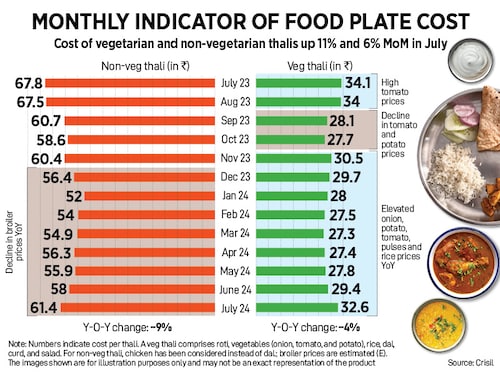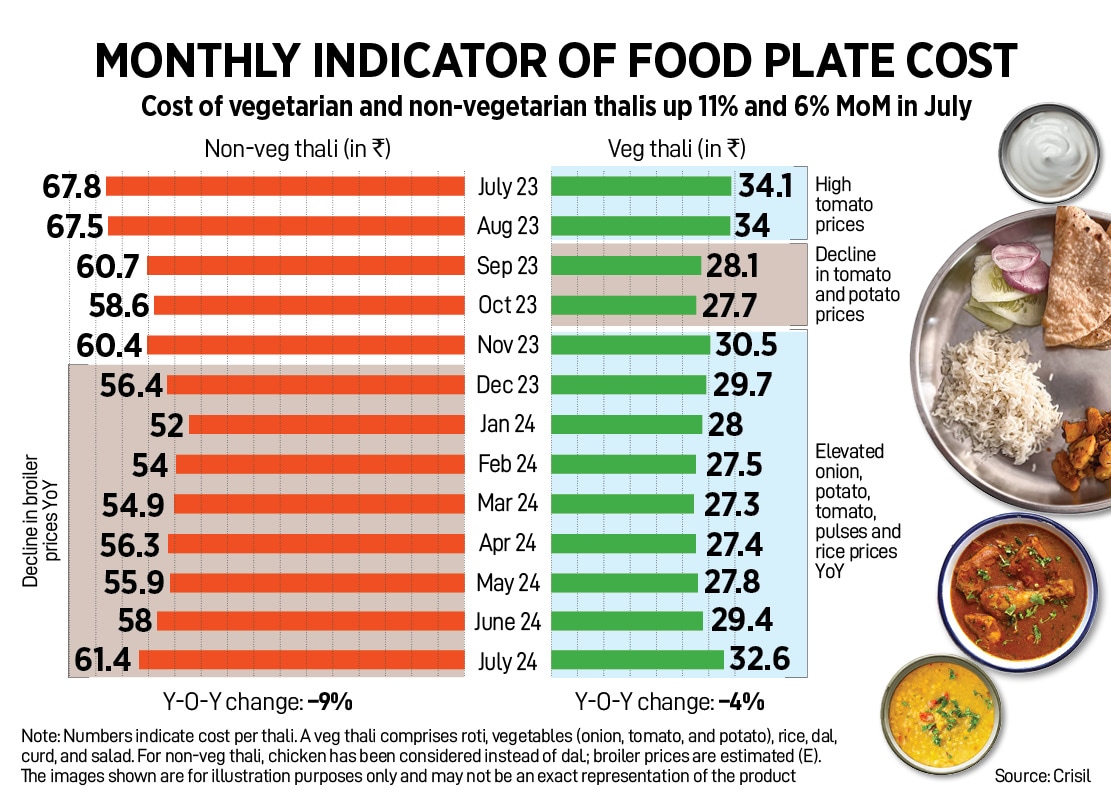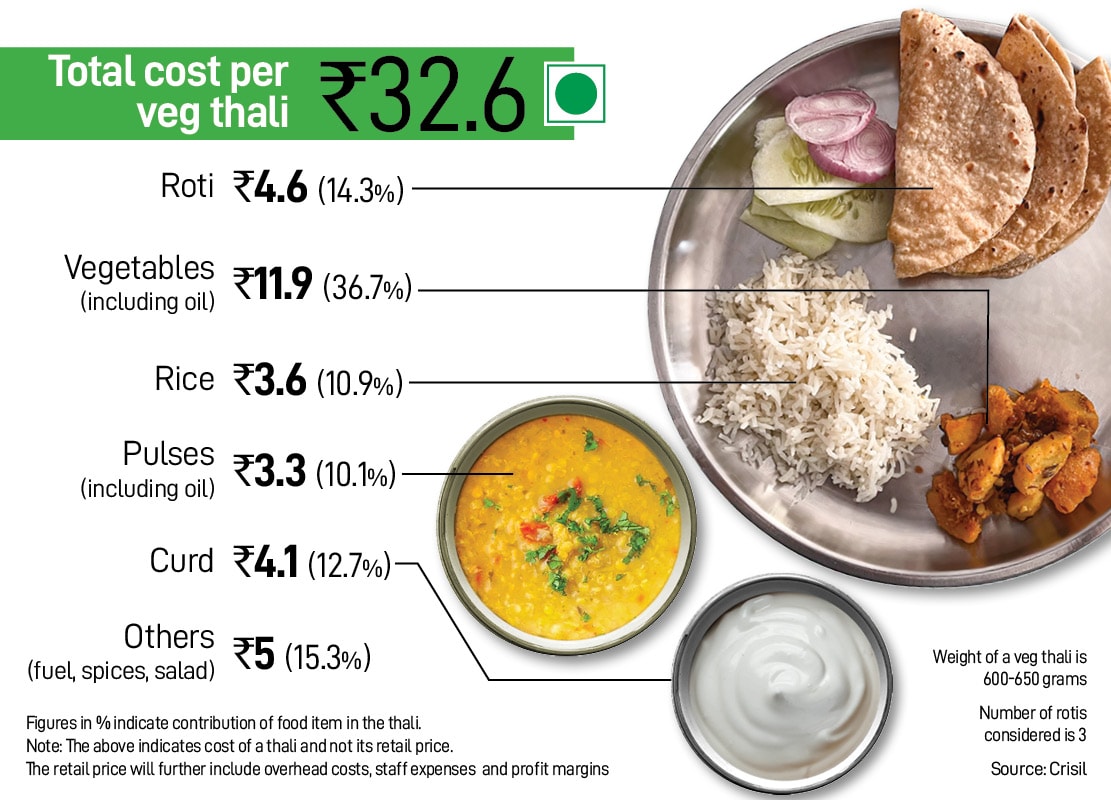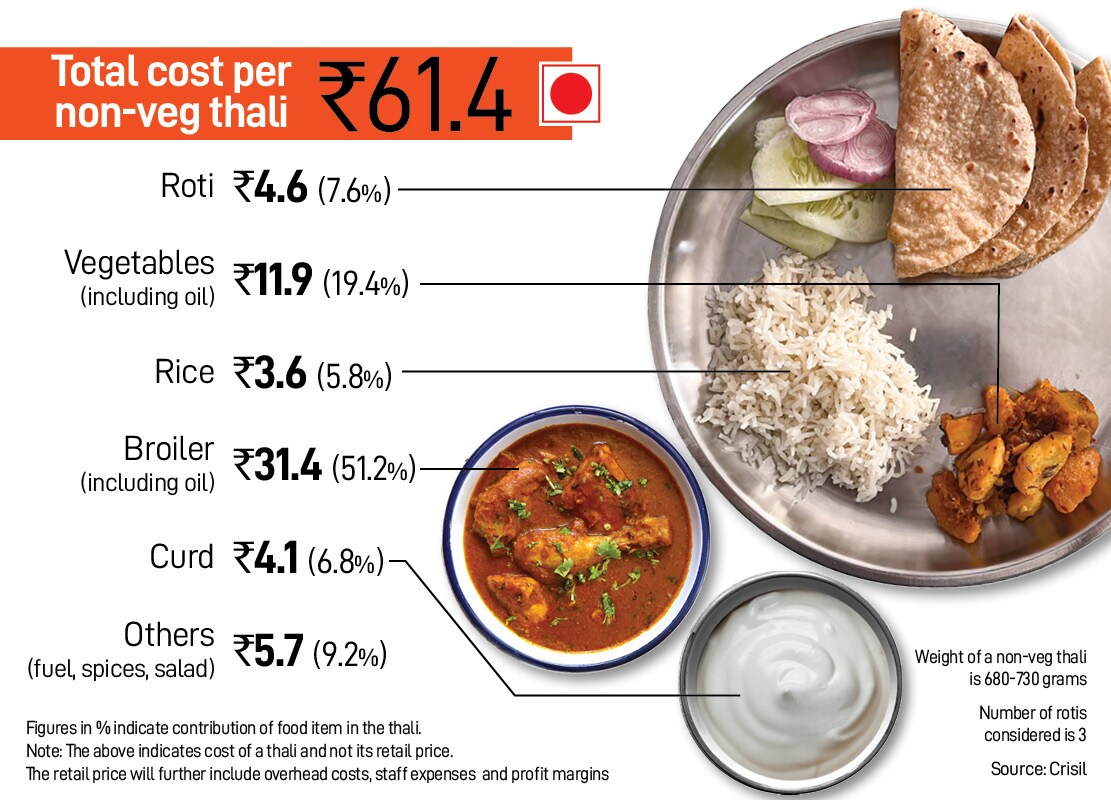How India Eats: Harsh weather continues to nudge up thali costs in July
Cost of non-veg thali rose slowly compared to veg thali, since the price of broiler, comprising more than 50 percent of the total, remained stable



The fury of nature continued to increase food prices in July as key items like tomato, potato and onion became expensive due to high temperatures and whitefly infestations. The average cost of a home-cooked vegetarian thali jumped 11 percent to Rs 32.6 in July from Rs 29.4 in June as per Crisil MI&A Research estimates. Most of the cost rise is attributed to tomato prices, which surged 55 percent month-on-month (m-o-m). In July tomato cost Rs 66 per kg, while in June it was Rs 42 per kg. This is mainly due to high temperatures impacting the summer crop in Karnataka and Andhra Pradesh.
Besides, scattered rainfall in May in Karnataka escalated whitefly infestations, thereby impacting the tomato output.

Onion and potato prices also rose 20 percent and 16 percent m-o-m in July, respectively, further contributing to the higher cost of the veg thali. While lower rabi production impacted onion prices, late blight infestation in Punjab, Gujarat and Uttar Pradesh affected potato output.
However, in July, veg thali costs declined 4 percent on a year-on-year (y-o-y) basis due to a 40 percent drop in tomato prices on the high base of the previous fiscal. Prices had touched Rs 110 per kg in July 2023, affected by flash floods that hit supply from northern states while pest infestation impacted the output from Karnataka. A 65 percent and 55 percent y-o-y increase in the prices of onion and potato arrested a further decline in the thali’s cost amid lower arrivals, says Crisil.
The average cost of preparing a thali at home is calculated based on input prices prevailing in north, south, east and west India. The monthly change reflects the impact on the common man’s expenditure. The data also reveals the ingredients (cereals, pulses, broilers, vegetables, spices, edible oil, cooking gas) driving changes in the cost of a thali.

Meanwhile, cost of non-vegetarian thalis jumped 6 percent in July to Rs 61.4, but decreased 9 percent y-o-y. The cost rise was slower compared to the veg thali since the price of broiler, comprising more than 50 percent of the total, has remained stable. The cost decrease on an annual basis was due to an 11 percent y-o-y decline in broiler prices on the high base of fiscal 2024.
(Forbes India"s monthly series "How India Eats" takes a look at how the average price of a food plate in India changes every month, indicating the impact on the common man"s expenditure, by analysing the Indian thali.)
First Published: Aug 06, 2024, 10:50
Subscribe Now